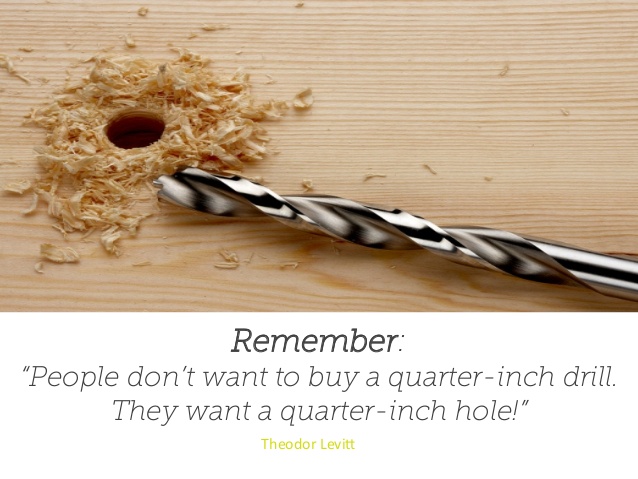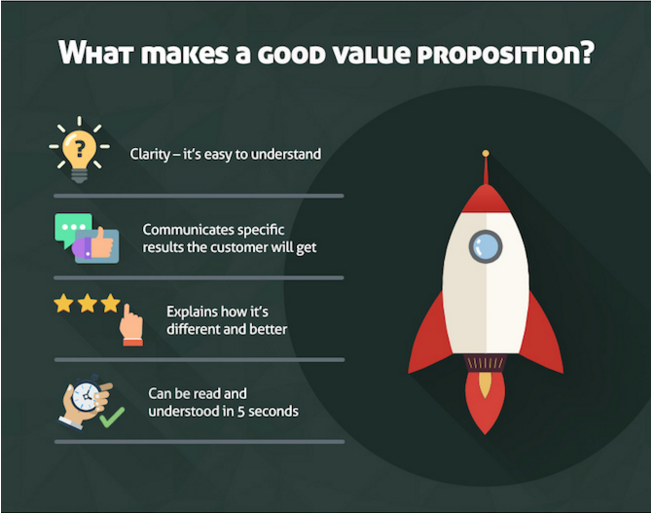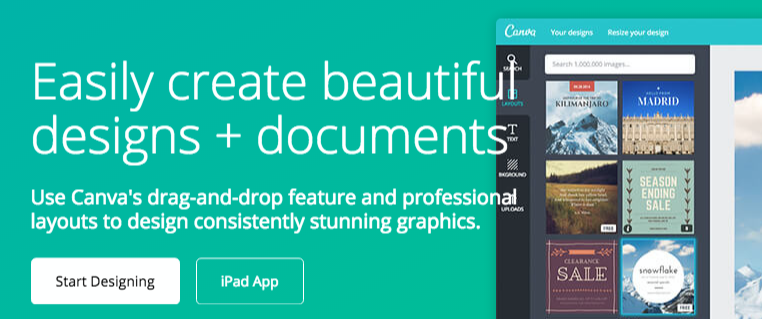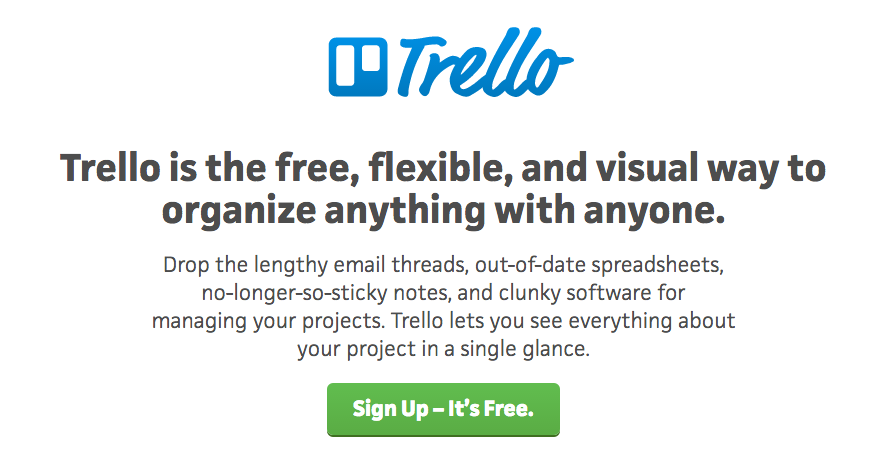Scenario: you’re deciding between two wedding dress vendors. One offers premium brands at affordable prices, and the other offers the country’s only 65-Step Wedding Dress Matching Test – which business piques your interest? In a competitive retail space where everybody offers ‘exceptional service’ and ‘superior quality’, your business needs a competitive advantage, called a value proposition.
What is a value proposition and why do I need one?
A value proposition tells customers why they should buy from your business over competitors – the more UNIQUE, the better. As Conversion XL says, a value proposition should explain how your product solves your customers’ problems or improves their situation (relevancy), and should deliver specific benefits (quantified value).
What goes into a value proposition?
A value proposition needs to be user-centric, focusing more on what your wedding customers need, rather than what your business offers. Performing customer surveys can be insightful in establishing what’s really important to your customers, versus what you think they value in a wedding vendor.
Surveying a sample of your clients might reveal that 85% are price-conscious, in which case a price-beat guarantee might form part of a powerful value proposition.
If they are more concerned with receiving purchases on time and ahead of their wedding date, a delivery guarantee might be enticing.
If indecision is a problem your customers face and a returns guarantee would give them peace of mind, this might be an attractive addition to your value proposition.

How do I create a value proposition?
To create a value proposition for your wedding business, complete the following steps:
- Competitor research: know what competitors are offering, particularly if you’re aiming for uniqueness. How do they position themselves in the market? What do they promise customers they will or won’t do? What can you offer or promise that none of your competitors are willing to do?
- Customer research: drawing from your personal experience or customer surveys, develop an understanding of WHO your target market is and create a profile or persona of your ideal customer.
- Benefits: get clear on the key benefits of using your product or service. These should directly address the needs and concerns expressed by clients in the surveys.
When you’ve completed these steps, use this value proposition template created by Geoff Moore to summarise your findings:
For_______________ (target customer) who _______________ (statement of the need or opportunity) our (product/service) is _______________ (product category) that (statement of benefit) _______________.
How should I structure my value proposition:
Using the sentence created above, flesh it out to include some key messages for presenting your newly formed value proposition on your website. Hubspot suggests that a value proposition is one of the most important conversion factors, and the very first thing people should see when they land on your site. The components of a solid value proposition include:
- heading: describing the end benefit that you offer to customers
- subheading: detailed explanation of what you offer to whom and why
- list of key benefits: 2-3 bullet points or sentences expanding on your benefits and key features.
- visual: a video or supporting image/visual to enhance your message that shows the value proposition in action
After you’ve created your value proposition, check it against Conversion XL’s criteria and ensure it adequately (but succinctly) answers the following questions:
- What product or service is your company selling?
- What is the end-benefit of using it?
- Who is your target customer for this product or service?
- What makes your offering unique and different?

Learn from the best
Here are three examples of global brands that display value propositions on their websites. For complete views, click the images and scroll the homepages to see how they creatively incorporate images and interactive design features as part of this process.
WordPress
- What product or service is the company selling? A free website.
- What is the end-benefit of using it? A free website.
- Who is the target customer for this product or service? People who want a personal blog or a business site.
- What makes this offering unique and different? Not obvious, but they’ve later used a credibility marker to reassure customers they’re making the right choice: “WordPress powers 25% of the internet”

Canva
- What product or service is the company selling? Easy to use drag-and-drop software for creating beautiful designs and documents.
- What is the end-benefit of using it? Beautiful designs and documents.
- Who is the target customer for this product or service? People who want beautifully designed DIY graphics and documents.
- What makes this offering unique and different? Not obvious without a direct competitor comparison, but they’ve later used a credibility marker to reassure customers they’re making the right choice: “Canva is used and loved by millions of people around the globe”
- BONUS: They’ve used an image to show the easy to use software in action creating beautiful designs and documents.

Trello
- What product or service is the company selling? A project management tool to help organise projects.
- What is the end-benefit of using it? Streamlined communication to see everything at a glance on one platform.
- Who is the target customer for this product or service? People who want to organise their project management.
- What makes this offering unique and different? Not obvious without a direct competitor comparison, but further down they’ve used a credibility marker to reassure customers they’re making the right choice: “Millions of people and companies of all kinds and sizes love using Trello,” along with logos from global brands such as Google, The New York Times and PayPal.
- BONUS: Strong use of images in subsequent sections showing the software in action.

Your turn…
Creating a strong value proposition not only makes it easier to attract your ideal customer, but it also establishes the framework for your company’s marketing and sales activities.
Have you got a unique value proposition that has increased conversion and given your wedding business a competitive edge? Leave a link to your website in the comments and we’ll see if we can guess what it is!












